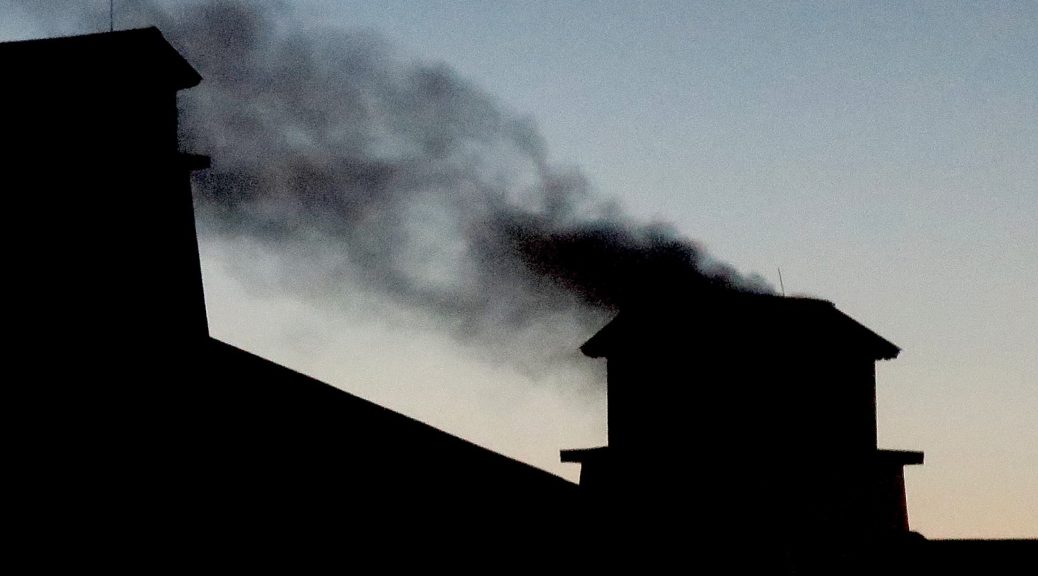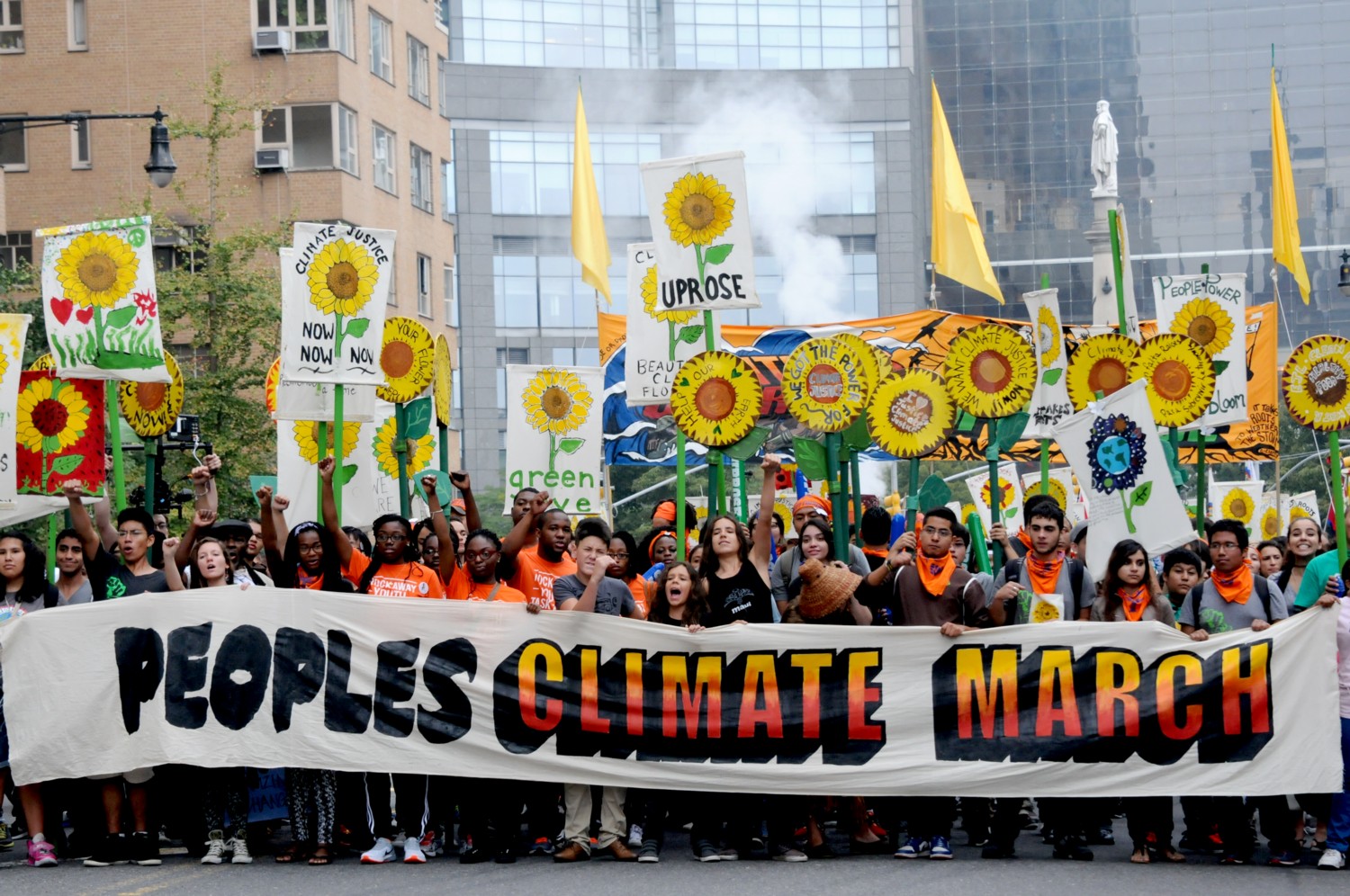
Today, Donald Trump took steps to dismantle President Obama’s Clean Power Plan, aimed at reducing climate-changing carbon emissions that are warming the planet, resulting in melting icecaps at the Arctic and Antarctic, rising sea levels that are making island nations and coastal communities uninhabitable, contributing to catastrophic weather events that are producing floods and famine and triggering millions of climate refugees, and was incentivizing a transition to a clean, renewable energy economy and away from a society run on fossil fuel. Trump claimed it would save money and reinvigorate the coal industry, restoring jobs to coal miners. But you pay now or later in terms of repairing infrastructure, not to mention the public health impacts of air and water pollution, wildfires, heat exhaustion, and so forth. Trump is pitching it as “energy independence policy” but the US already is becoming energy independent and there are far more people permanently employed in an emerging clean energy industry than there are coal miners.
In the announcement, the White House made sure to emphasize how Trump is fulfilling a campaign promise, giving the beleaguered Donald a “win.” But instead of it being an American Energy Independence Policy, it is an American Dependence on Fossil Fuel Energy Policy. It will be up to states like California and New York, whose governors’ announced a commitment to continuing to meet or exceed the Clean Power Plan targets.
Here are the details from the White House on Trump’s “Energy Independence Policy.” – Karen Rubin, News & Photo Features
“I am going to lift the restrictions on American energy, and allow this wealth to pour into our communities.” – Donald J. Trump
MUCH NEEDED REFORM: The past Administration burdened Americans with costly regulations that harmed American jobs and energy production.
- The previous Administration’s Clean Power Plan could cost up to $39 billion a year and increase electricity prices in 41 States by at least ten percent, according to NERA Economic Consulting.
- The Clean Power Plan would cause coal production to fall by 242 million tons, according to the National Mining Association.
- 27 states, 24 trade associations, 37 rural electric co-ops, and 3 labor unions are challenging the Clean Power Plan in Federal court.
AMERICAN ENERGY INDEPENDENCE: President Donald J. Trump’s Energy Independence Policy Executive Order reverses the regulations on American jobs and energy production.
- President Trump’s Executive Order directs the Environmental Protection Agency to suspend, revise, or rescind four actions related to the Clean Power Plan that would stifle the American energy industry.
o President Trump’s Executive Order directs the Attorney General to seek appropriate relief from the courts over pending litigation related to the Clean Power Plan.
- President Trump’s Executive Order rescinds Executive and Agency actions centered on the previous administration’s climate change agenda that have acted as a road block to energy independence.
o President Trump’s Executive Order lifts the ban on Federal leasing for coal production.
o President Trump’s Executive Order lifts job-killing restrictions on the production of oil, natural gas, and shale energy.
- President Trump’s Executive Order directs all agencies to conduct a review of existing actions that harm domestic energy production and suspend, revise, or rescind actions that are not mandated by law.
o Within 180 days, agencies must finalize their plans.
- President Trump’ Executive Order directs agencies to use the best available science and economics in regulatory analysis, which was not utilized by the previous administration.
o It disbands the Interagency Working Group (IWG) on the Social Cost of Greenhouse Gases.
- By revisiting the federal overreach on energy regulation, President Trump is returning power to the states – where it belongs.
FREEING AMERICA’S POTENTIAL: President Trump has worked tirelessly to free American industry and ingenuity from the constraints of Government overreach.
- President Trump has signed four pieces of legislation to clear burdensome and costly regulations on energy production from the previous Administration.
- President Trump has required that for every new Federal regulation, two existing regulations be eliminated.
- President Trump has directed each agency to establish a Regulatory Reform Task Force to identify costly and unnecessary regulations in need of modification or repeal.
- President Trump has directed the Department of Commerce to streamline Federal permitting processes for domestic manufacturing and to reduce regulatory burdens on domestic manufacturers.
- President Trump signed legislation, House Joint Resolution 38, to prevent the burdensome “Stream Protection Rule” from causing further harm to the coal industry.
- President Trump ordered the review of the “Clean Water Rule: Definition of Waters of the United States,” known as the WOTUS rule, to evaluate whether it is stifling economic growth or job creation.
- President Trump signed a Presidential Memorandum and gave a Presidential permit to clear roadblocks to construct the Keystone XL Pipeline.
- President Trump signed a Presidential Memorandum declaring that the Dakota Access Pipeline serves the national interest and initiating the process to complete its construction.
FULFILLING HIS PROMISE: By taking action on the Clean Power Plan, President Trump is fulfilling his promise to the American people.
- As a candidate, Mr. Trump promised “we will eliminate… the Clean Power Plan—these unilateral plans will increase monthly electric bills by double-digits without any measurable improvement in the climate.”





